- researchgate.net - The Effect of Calisthenics Exercises on Body Composition in Soccer Players
- actakinesiologica.com - Repetitive sprint training or calisthenics, which is better for athletic performance?
- calisthenics.cz
Calisthenics, beauty and strength of the body in motion. How to practice it correctly?
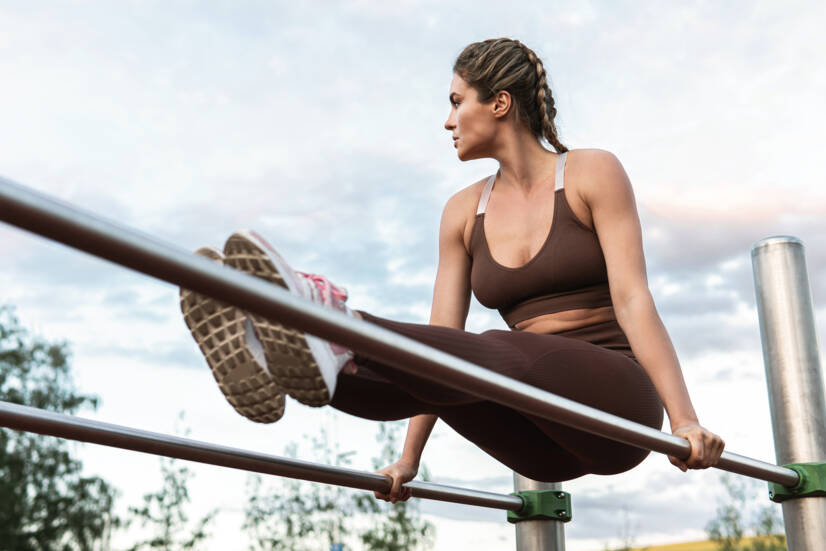
Using the weight of your own body to improve its functionality and strength. This is also how one could describe this form of physical development. However, calisthenics brings us much more.
Article content
Kallos - beauty and sthenos - strength.
Beauty as a manifestation of the aesthetics and perfection of the human body combined with its strength. This connection is fully manifested in the movements, i.e. the exercises that are part of calisthenics.
Acrobatics, gymnastics, weight training are elements that are used to improve the functionality, strength, coordination and balance of our body.
Finding its proper center of gravity will be the key in many calisthenics exercises.
The need in turn will be his solid center and strength. Especially in the limbs.
The history of calisthenics
The first mention of calisthenics is given by the ancient Greek historian Herodotus.
In his description of the battle of Thermopylae in 480 BC, he states that calisthenics was used by the Spartans as a training.
The Roman historian Livy states that it was part of the training of gladiators.
After calisthenics had already begun to be used to train armies in the Middle East, it returned to Europe.
In the 19th century AD, the Prussian military commander and teacher Friedrich Ludwig Jahn developed several types of calisthenics.
One of these was the breastplate.
This gave birth to the sport of gymnastics.
Around the same time, the American educator Catharine Esther Beecher was instrumental in promoting calisthenics and its inclusion in physical education courses.
At the beginning of the 20th century, many athletes and strongmen built their strength through exercises using their own body weight.
Later, with the development of bodybuilding, calisthenics began to lose popularity. It began to be considered ineffective.
In the 21st century, however, its development, especially thanks to social networks, has restarted.
It began to be defined as a street workout exercise.
Also thanks to videos posted by people like Denis Minin or the current calisthenics legend Hannibal Lanham, who goes by the pseudonym Hannibal for King.
The history really goes back a long way. Thanks for the fact that calisthenics is still here.
After watching some of the videos, more than a few of us might agree.
Just type the above names into an internet search engine.
However, we must stop here.
Can we consider calisthenics as street workout and vice versa?
Street workout, by name, is an outdoor workout. In that case, any outdoor workout can be considered one.
In fact, calisthenics is the basis of street workout as such. In this case, there is no problem to combine these names.
Street workout uses exercise with what the street has to offer. Calisthenics can be practiced anywhere.
The difference is also in the exercises, which are more technical in street workout.
Whether they are also more strenuous cannot be said. The effort is relative.
The important thing is the movement.

What is calisthenics?
Definitely a form of physical development.
This activity uses the weight of one's own body as part of resistance training. The training consists of exercises such as, push-ups, bridges, sit-ups, pull-ups, push-ups, swings, lunges and nowadays many more.
It uses a variety of equipment, mainly gymnastic equipment such as trapeze bars, trapeze bars or rings.
Nowadays, it is more or less a street workout exercise. Therefore, its representatives do not despise anything that the street has to offer.
It can be crawl spaces, traffic signs, benches, railings or lighting poles.
Of course, the most used are probably workout playgrounds.
Climbing, balancing and gymnastics were popular elements of calisthenics in the past and still are today.
Calisthenics is also used in armies as part of military training or in schools as part of physical education.
Benefits of calisthenics:
- beneficial effects on the cardiovascular system
- builds muscle mass
- improves flexibility and agility of the body
- increases the level of physical coordination and balance
- develops dynamics
- serves for comprehensive strength development
These abilities are acquired through the above exercises and movement patterns.
With gradual improvement and increase in strength, these exercises can be modified to greater perfection and difficulty.
Simple push-ups become trapeze or one-arm push-ups. Over time, we can move from handstand push-ups to standing push-ups. Squats can replace one-legged squats and so on.
In calisthenics, strength skills are acquired in the following ways:
- by increasing the number of repetitions in one set of the exercise.
- adding an external load (for example, dumbbells or a second exerciser)
- increasing leverage
The movements used in calisthenics exercise large muscle groups. Thus, the exercises are not isolated and help us engage multiple muscles at once.
This is typical of bodyweight exercises. This has its advantages, of course.
We get a more functional body and better working muscle groups.
It also improves the mobility of the whole body and improves the coordination and quality of movements. This is due to the fact that each muscle part is dependent on the others when moving. If one of them lags behind in strength, it will affect the other one.
Calisthenics blurs these differences and the muscle parts improve almost evenly.
It's the law of functional training.
Multiple muscle groups need to be engaged to perform a movement. If it is performed frequently or with a load, those muscle groups needed for that movement improve in strength.
Thus, one does not limit the other.
Also read the next article on self-weight training.
Cooperative calisthenics
In this case, two or more exercisers help each other during the exercise.
For example, one person does squats with someone else on their back.
Different equipment may be used.
For example, each person holds a rope by a different end and pulls it in the opposite direction.
The exercise partner puts less resistance on us, allowing us to perform the full range of motion.
The disadvantage of such an exercise compared to dumbbells is that we cannot measure the resistance that our partner puts on.
The advantage, on the other hand, is that we can vary the resistance according to the force we exert.
How to practice calisthenics?
First of all, there is no need to start right from the hardest exercises.
We build a house from the ground up, so in calisthenics we start with the easiest exercises first.
What number of reps and sets should we aim for?
We shouldn't be concerned with that at all.
There are a few guidelines on how to go about exercising with your own body weight. How many reps and sets should we do to grow our muscles?
However, it all depends on our training, body weight and ability to perform the exercise correctly.
The last point is fundamental when practicing calisthenics.
We can choose any training system. But we must train in such a way that we perform each exercise as needed.
Therefore, we also set the number of repetitions and sets in it according to our fitness ability.
Actually, we do it in such a way that we don't feel comfortable when we exercise. That is, so that we feel enough exertion that we are able to follow the movement pattern of the exercise.
For fitness progress, it is necessary to load the body beyond the comfort zone. But not for too long. This leads to physical fatigue and risk of injury.
However, we will gradually add to the training volume. So we will increase the number of repetitions or sets.
Alternatively, we will increase the intensity, thus shortening the breaks between sets or adding external load.
We will also incorporate more challenging exercises into the training plan.
It is essential for physical development that we do not get stagnant.
Read the article on how to make your own training plan.
The essence of calisthenics
It is a comprehensive exercise.
It uses the most natural exercises that help strengthen the deep and stabilizing muscles.
This makes natural activity not seem so strenuous.
It is a type of strength endurance training.
This means that it enhances our body's ability to withstand force loads for longer periods of time and use this to its advantage.
It has applications virtually everywhere.
In sports and in everyday life.
For example, walking home from the store with full shopping bags is also a strength endurance activity.
One example for all.
Calisthenics is about maximizing the potential of our muscles.
It's about engaging them properly during a given exercise and gaining control over your body.
Calisthenics puts a lot of emphasis on the center of the body, the deep stabilizing system or core.
In this article, you will read more about how to exercise the center of the body/core.
Basic calisthenics exercises
There are a number of these. Let's describe the most common ones.
Push-ups
We assume a standing upright lying position. We face the floor. Our body is extended. We rest on the palms of our outstretched hands and the toes of our feet. We slowly lower ourselves down until our face almost touches the ground. At this point, we begin to return to our original position. Throughout the exercise, we maintain a straight body line from head to toe.
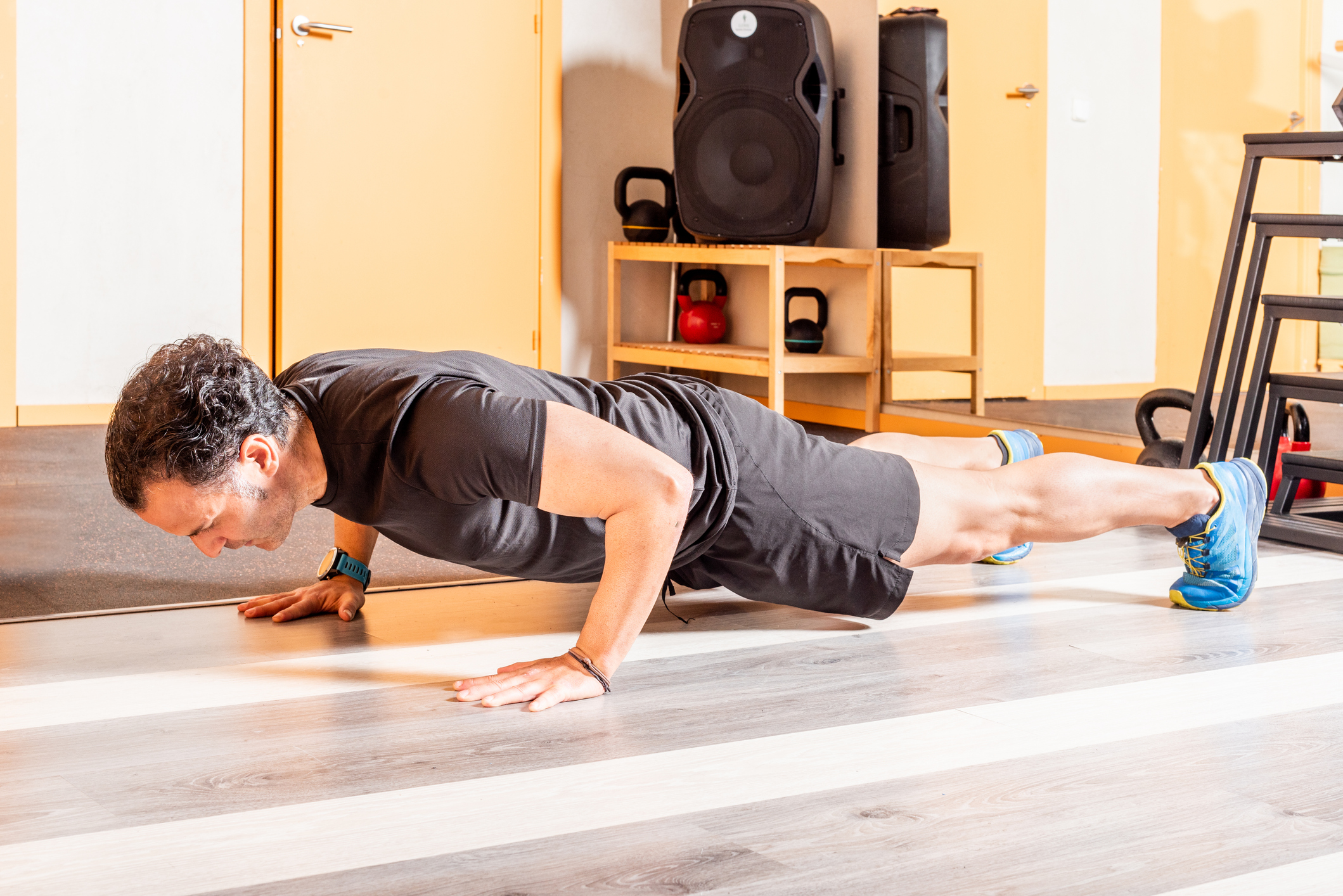
A lighter version of the exercise is to rest your palms on a raised mat or wall.
If you want to make the exercise more difficult, you can perform it with one arm rest or perform dynamic push-ups, where you clap your palms together in the top position.
We can also change the position of the hands. This changes the involvement of other muscles.
This exercise exercises the chest, triceps, shoulders and the middle of the body.
Squats
Stand with your feet approximately shoulder width apart. To begin, place your hands at your sides. Gradually lower yourself down as if you are going to sit down until your thighs are horizontal with the floor. At this point, begin to return to your original position.
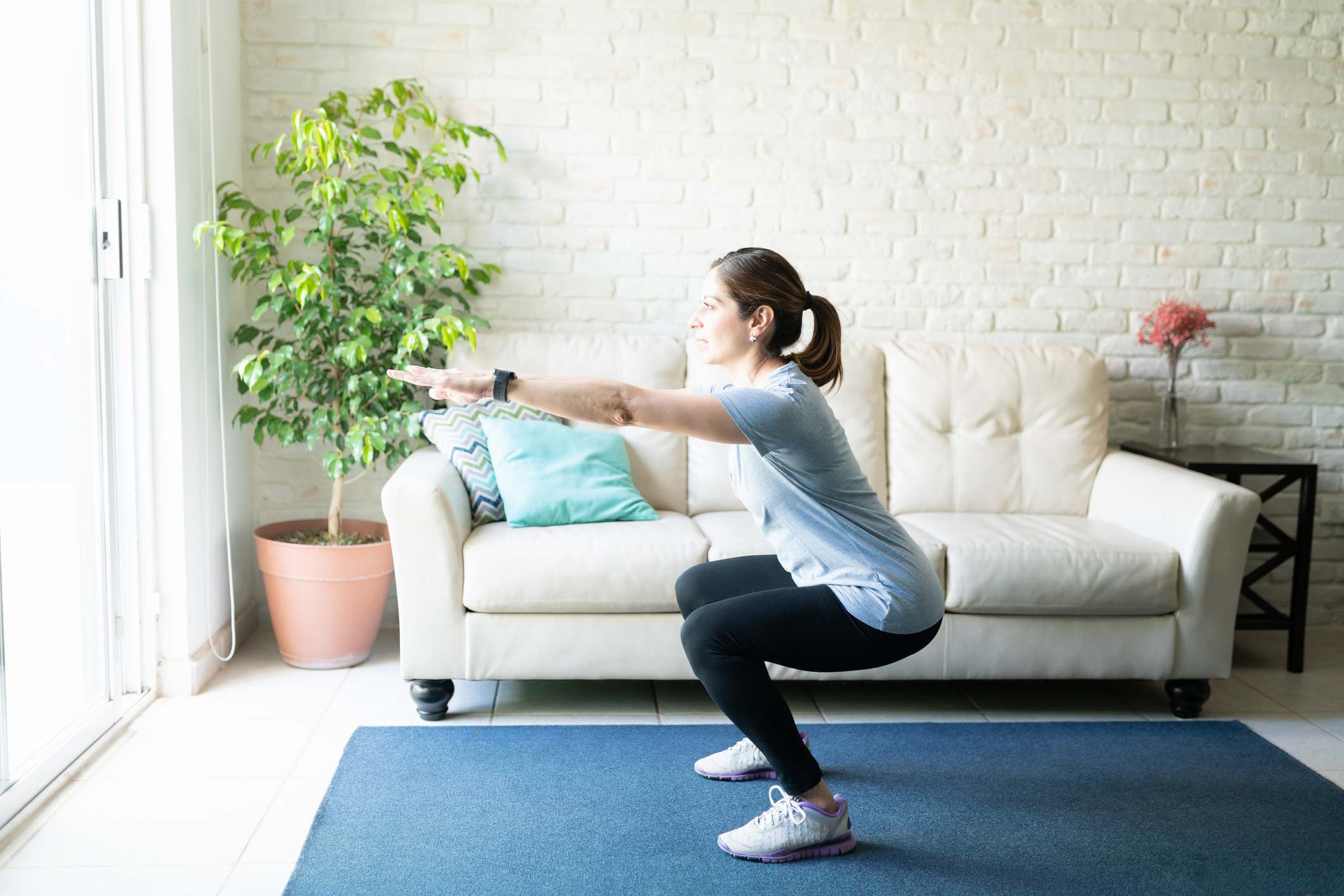
To make the exercise easier, we can do squats only halfway up, i.e. under squats. Gradually lower the position.
A more difficult variation is to do squats with the arms extended, straightened or even locked. We can also do them on one leg, called unilateral.
This exercise strengthens the muscles of the lower limbs, both front and back, calves, buttocks and middle of the body.
Lunges
From a standing position with your feet naturally side by side, step forward with one leg. Take a full step and slowly lower yourself down until your thighs are horizontal with the floor. Your knee should not extend beyond the level of the toe of the foot of the lower limb. Return to the original position and continue with the same leg or the opposite leg to lighten the exercise. You can also continue to move forward and alternate limbs in this way.
Keep your arms at your sides or behind your head.

If we need to lighten the exercise, we don't need to make the lunges so deep.
A heavier version of this exercise is to take some weights in your hands or on your shoulders.
We are exercising the thigh muscles, both front and back, and the gluteal muscles.
Trapeze pull-ups
Grasp the trapeze bar overhand with your hands shoulder-width apart. Smoothly pull upward with your chin to bring your chin to the level of the trapeze bar. Then lower yourself down in a controlled manner until your legs are extended or almost extended. Hang your legs down loosely or keep them slightly forward.

A simpler version is done with the feet propped up on the mat and overhead.
A more difficult exercise is performed with the legs in an extended position, bent forward at the hip joints. The muscles of the deep stabilization system are also engaged.
If we hold the trapeze bar underhand, we engage more of the biceps of the upper limbs in the exercise.
This exercise strengthens the muscles of the upper back, forearms and biceps.
Barbell raises (dips)
This exercise is performed on a trapeze or between two parallel horizontal bars or planes at a sufficient height.
Grip the bars with the palms of the hands with the thumbs facing inwards. The lower limbs are lowered straight down. They may also be bent at the knees towards the front or back. Pull yourself into a near-extension of the arms and slowly lower yourself down until the elbows are at shoulder level. From this position, return to the original position.
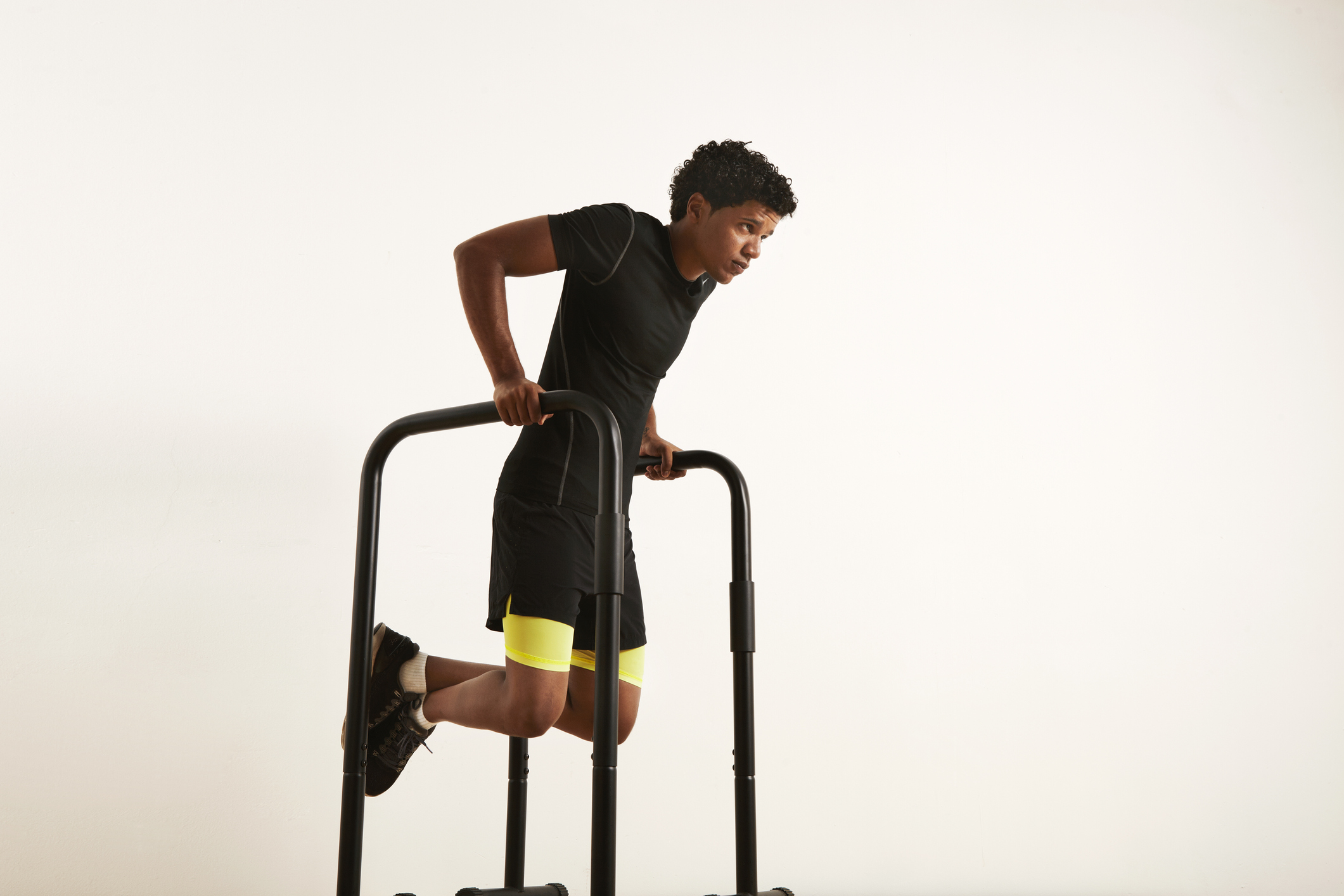
This exercise exercises the pectoral muscles, triceps and shoulders.
Plank
We take a lying upright position. We can stay in this position or lower ourselves to our elbows. The lower legs, torso and head are in one plane. We try to keep the buttocks a little above the plane, but not too high. We also don't have them bent downwards. The lower and upper legs are shoulder width apart.
We try to stay in this position for as long as possible.
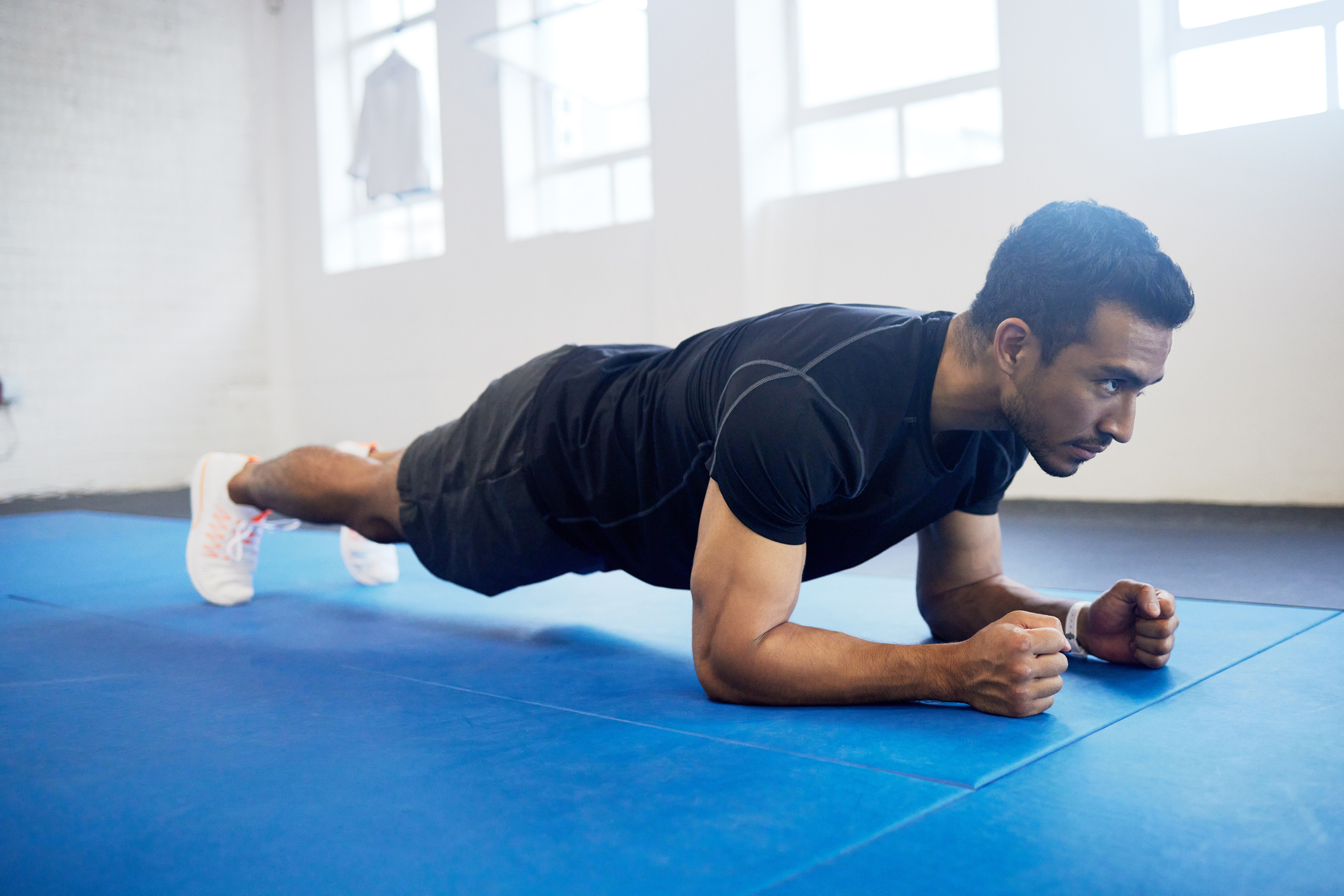
Gradually moving the upper limbs forward or narrowing the position of the arms and legs makes the exercise more difficult.
We can also do different versions of this exercise.
We exercise the centre of the body, i.e. the core and shoulders.
Also read the article on how to do the plank correctly.
Muscle-ups
This is already a bit more challenging exercise. It is performed on a trapeze or rings.
We grasp the trapeze bar at shoulder width. We pull ourselves up dynamically, helping ourselves by swinging our lower body, called kipping. As the upper chest approaches the bar, we quickly bend our wrists to bring our forearms above the bar. We try to bring the whole upper body up to the waist level above the bar. We reach the position of the outstretched arms. We bend the body slightly. Then we lower ourselves back to the original position in a controlled manner through the bent elbows.
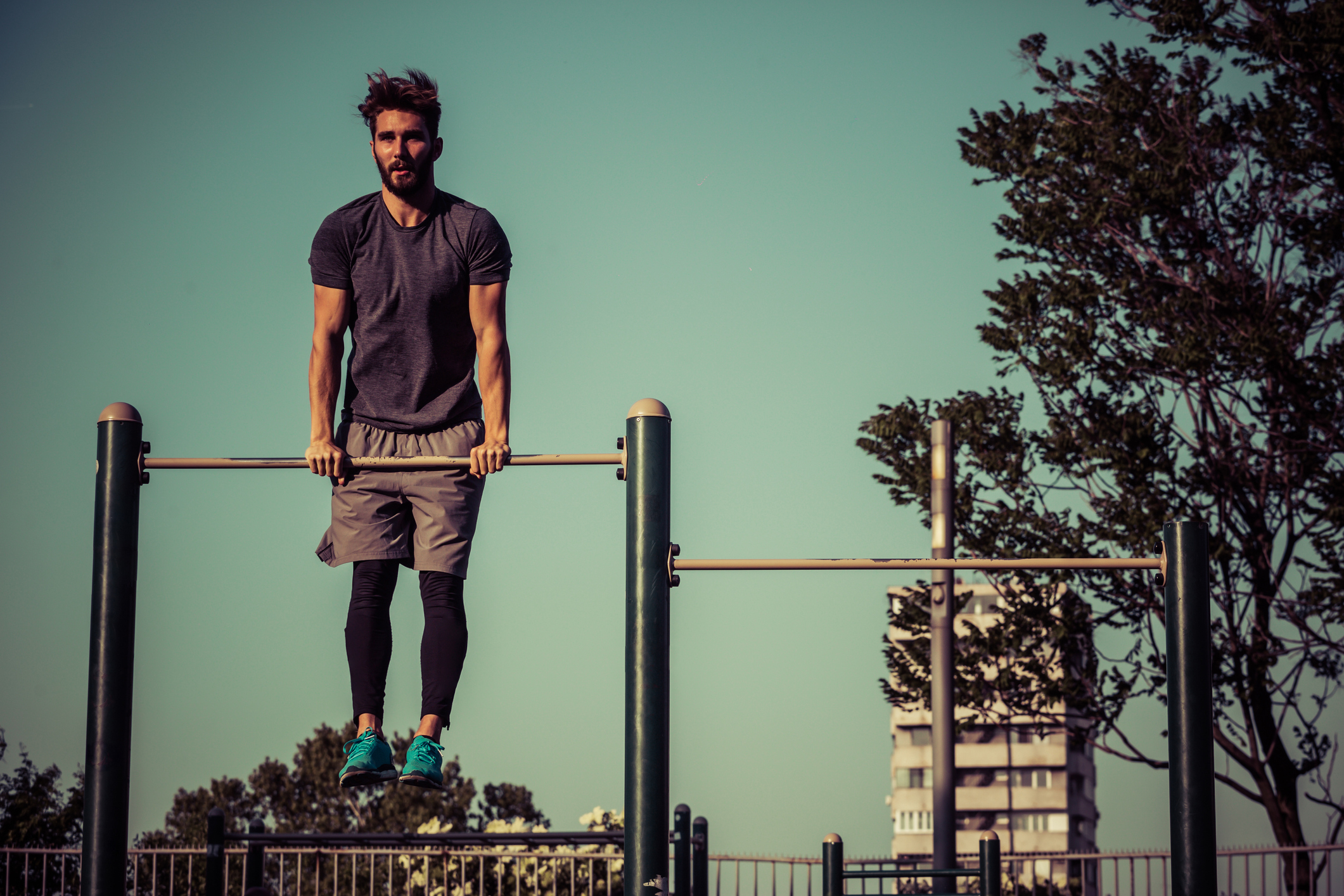
A more difficult variation of this exercise is to perform everything more slowly.
Exercise the muscles of the middle of the body, shoulders, shoulder blades, back and triceps.
Front lever
This exercise looks simple, but it takes a lot of practice to master it perfectly.
We grip the trapeze bar with our hands at shoulder distance. Our legs are loosely extended. The moment we want to lift the torso with our lower legs, we straighten our shoulders and start engaging the entire upper body and back muscles. It's like we're squeezing the top pulley with our arms extended. We keep our back extended and our abs in line with them. The glutes are neither back nor front. At this point, the legs are no longer loose. We also stretch them and keep them in line with the torso at all times. The toes point down or horizontal with the torso.
The whole trunk and legs, which are in line all the time, are raised to a position horizontal with the floor. The upper limbs are stretched all the time and point slightly towards the lower limbs. They are therefore not perpendicular to the floor. The head is also horizontal with the floor. The gaze is directed towards the ceiling.
It is necessary to find the correct distribution of forces and centre of gravity of the body.
We stay in this position for some time. In the same way as we rose, we come back down.

This exercise requires strong back muscles, upper limb muscles and core muscles.
In this way, we will know which muscles we are exercising the most.
To start, we can help ourselves by practicing on a lower trapeze. It will be so low that we can already touch the ground with one leg bent at the knee when we are horizontal with the floor. We stretch the whole body and pull the supporting lower limb. Here we practice the middle phase of the exercise.
For a better start, calisthenics can be practiced under the supervision of an experienced instructor.
The Internet offers many contacts of professional trainers who can teach us everything we need for our physical and fitness development through calisthenics.
In any case, it is also necessary to consult a doctor to see if this exercise is suitable for you.
Interesting resources
Related










